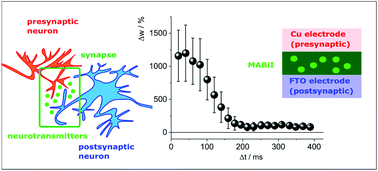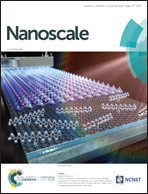Synaptic plasticity, metaplasticity and memory effects in hybrid organic–inorganic bismuth-based materials†
Abstract
Since the discovery of memristors, their application in computing systems utilizing multivalued logic and a neuromimetic approach is of great interest. A thin film device made of methylammonium bismuth iodide exhibits a wide variety of neuromorphic effects simultaneously, and is thus able to mimic synaptic behaviour and learning phenomena. Standard learning protocols, such as spike-timing dependent plasticity and spike-rate dependent plasticity might be further modulated via metaplasticity in order to amplify or alter changes in the synaptic weight. Moreover, transfer of information from short-term to long-term memory is observed. These effects show that the diversity of functions of memristive devices can be strongly affected by the pre-treatment of the sample. Modulation of the resistive switching amplitude is of great importance for the application of memristive elements in computational applications, as additional sub-states might be utilized in multi-valued logic systems and metaplasticity and memory consolidation will contribute to the development of more efficient bioinspired computational schemes.



 Please wait while we load your content...
Please wait while we load your content...